If you’re planning on taking a road trip around Poland to visit the many World War II sites, there are a few important things you should know about driving in Poland. First of all, know that driving in Poland is overall an easy and pleasant experience with few surprises. Yay!
Beyond that, this post answers some of the questions you’re sure to have while driving around Poland, helps you prepare for your road trip, and passes along a few key things I picked up on my two-week-long trip around the country. Enjoy!
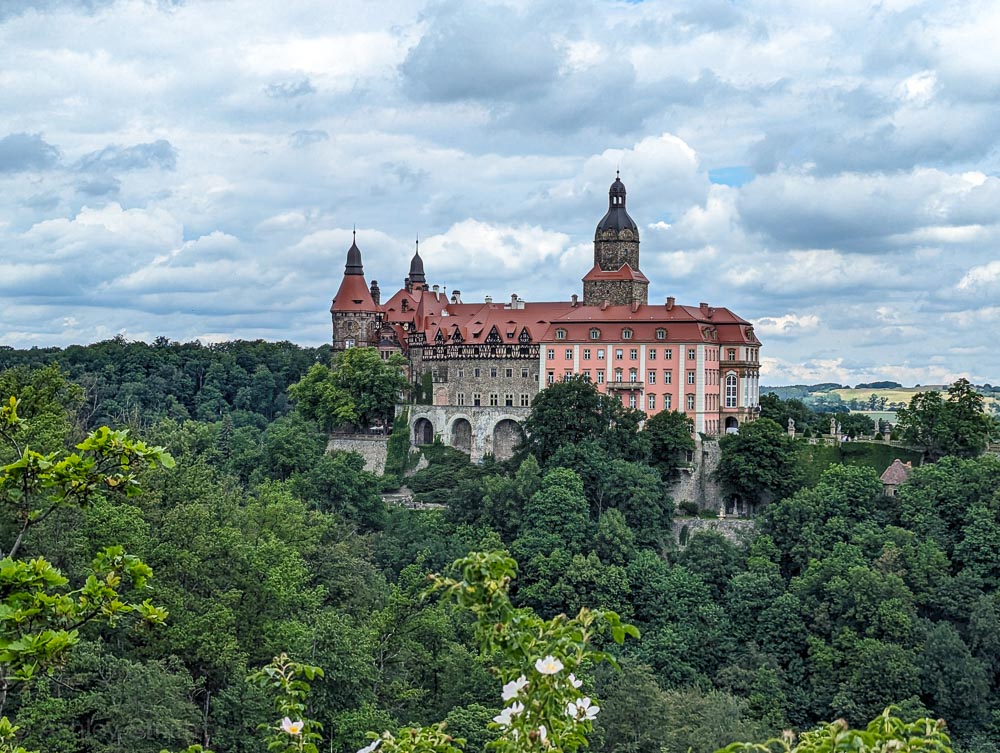
Renting a car in Poland
Renting a car in Poland is really easy and pretty much the same as renting a car here in the US or anywhere else. The only thing to note is that you probably won’t find many of the rental car companies you’re familiar with.
I booked through DiscoverCars.com like I always do and ended up going with a company called Kaizen Rent. (There’s also a rental car company called Panek. Umm, no thanks; I’ll pass.) I had excellent pickup and dropoff experiences at the Warsaw airport and zero issues along the way. Since “no news is good news,” I’d definitely rent with Kaizen Rent again.
Take a look at your Poland rental car options here.
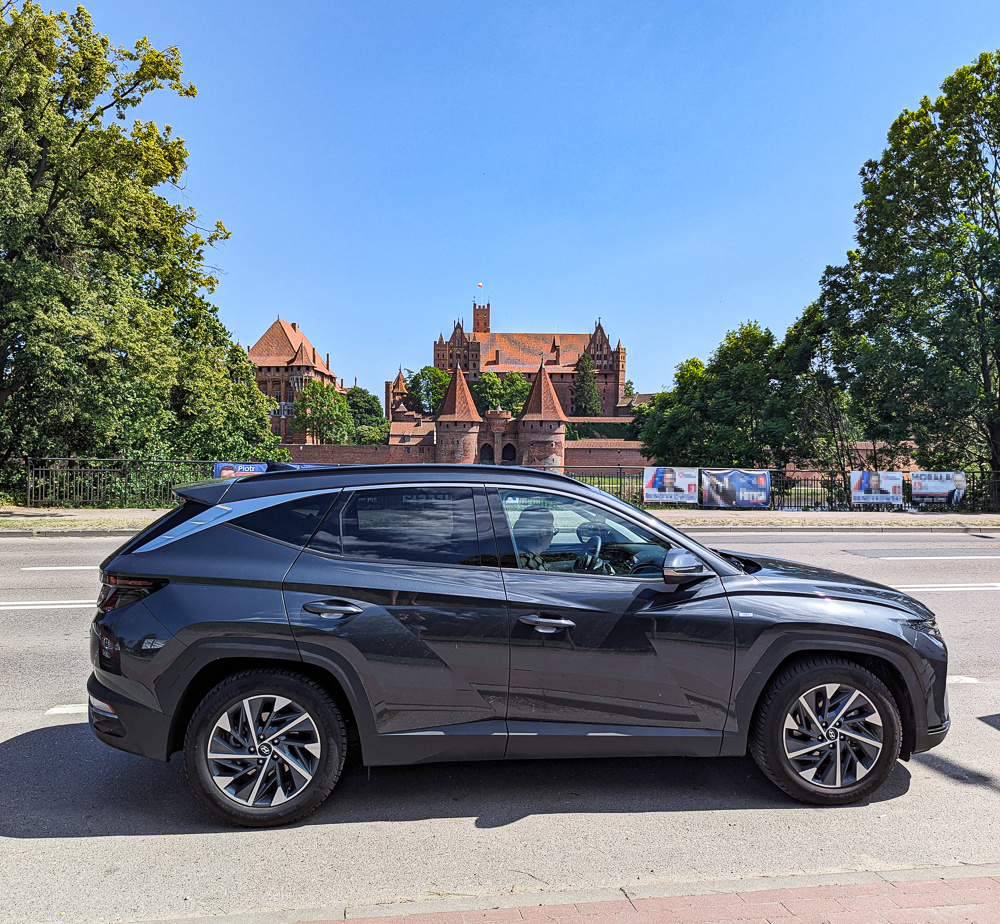
What kind of car to rent in Poland?
When renting a car in Poland, I’d suggest getting whatever you and your budget are most comfortable with. For driving in Slovenia, for example, I highly recommend an SUV with 4WD due to the many off-road trails and steep mountains you’ll need to take. For driving in Belgium and Germany, I always recommend the smallest car you can get due to the compact nature of the cities and their parking garages.
But for Poland, you won’t encounter any of that. The roads are paved, you won’t encounter any serious inclines, and parking (for the most part) is plentiful and easy. Rent whatever your heart desires!
Important tip! Most cars in Poland (and Europe in general) are manual transmission. Unless you’re skilled at driving a stick shift, be sure to filter your rental car search for cars with automatic transmission. This is crucial. And yes, you will pay more for your rental since supply of automatics is limited.
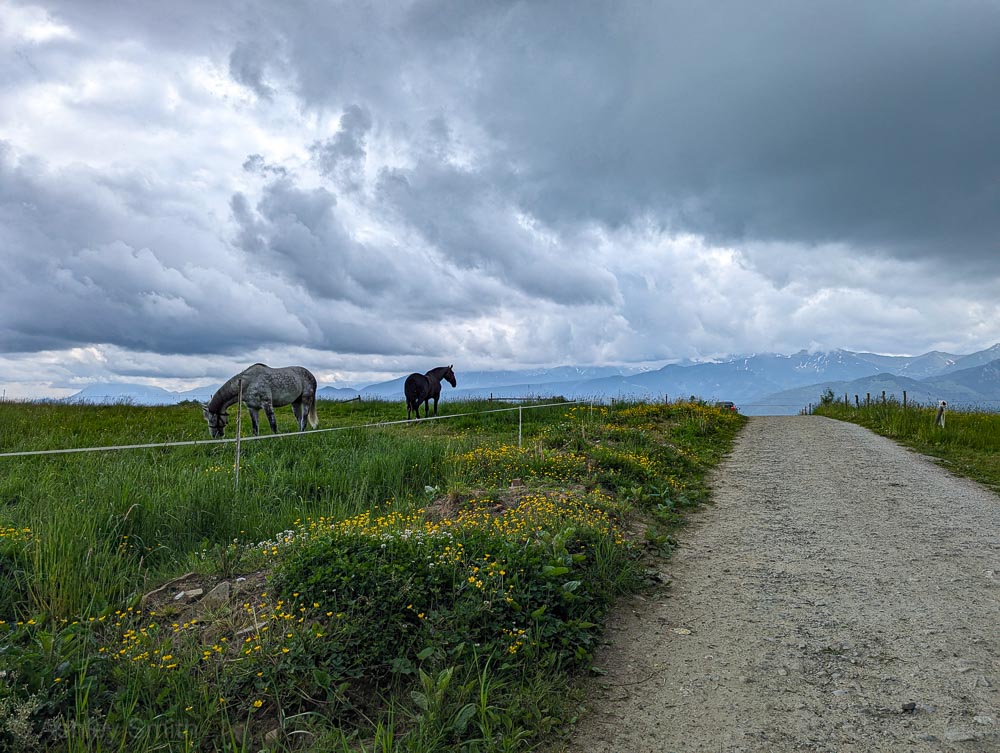
Requirements for driving in Poland
Driving in Poland is pretty straightforward and there aren’t a lot of special requirements you’ll need to consider. As long as you have a valid US driver’s license, you should be good to go. Keep in mind however that each rental car company has their own set of rules and requirements that you’ll need to abide by. Check with them directly for what you’ll need. You can typically find this in the fine print of the rental contract too.
This post covers some of the basic information for driving in Poland and my own observations and tips. It does not cover every single driving rule that exists here. It’s your responsibility to research international driving laws and your research should go beyond this blog post.
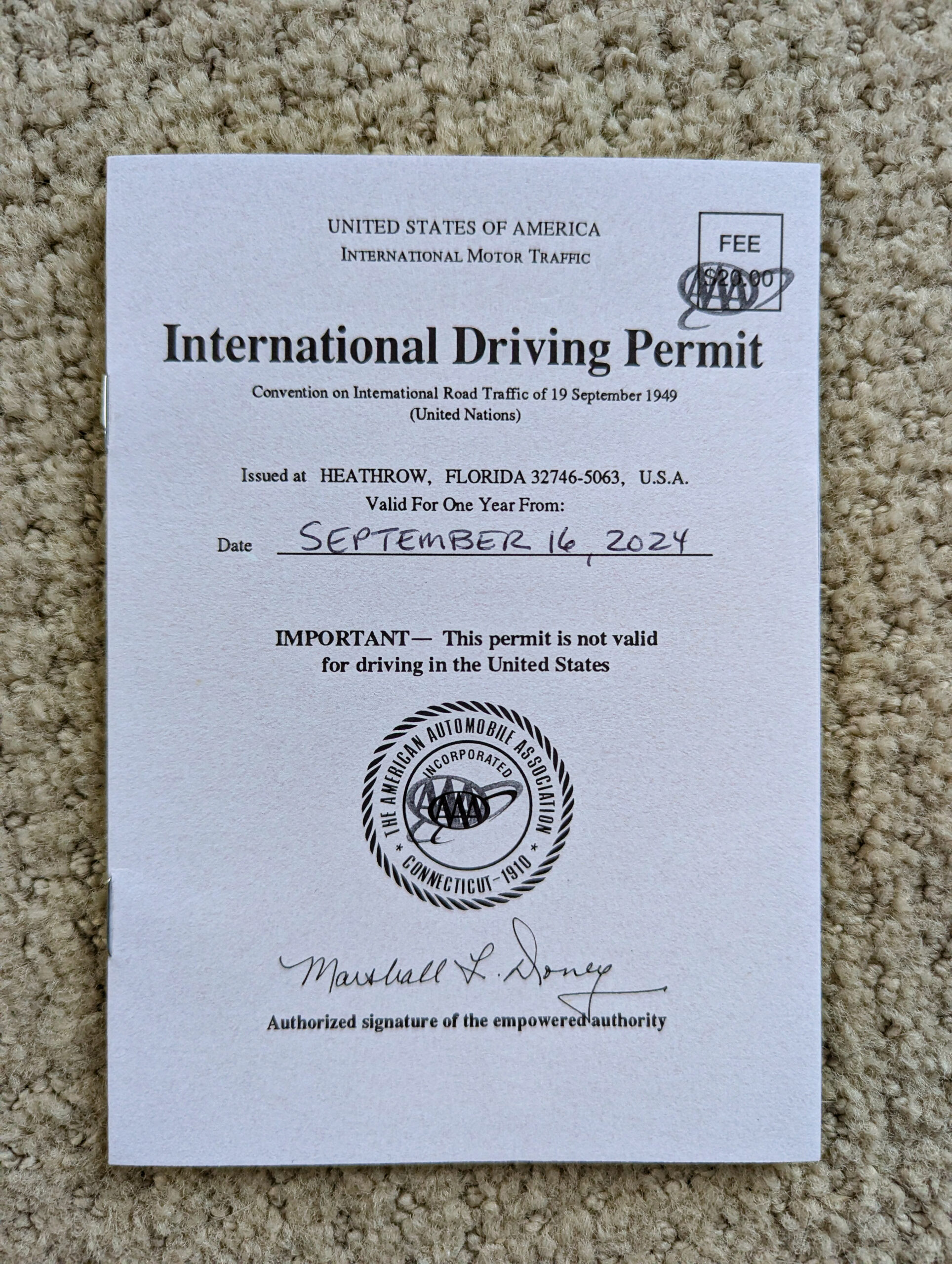
International Driver’s Permit
Despite having driven all around Europe for the past decade, I’ve only been asked for an international driver’s permit a couple of times—in Naples, Italy, in Brussels, Belgium, and most recently in Poland.
Poland is one of the country’s that requires you to have an international driver’s license in order to rent a car. In the US, you can get one from AAA. It takes about half an hour, costs just $20, and is good for one year. You don’t have to take any tests or anything. It’s really just a document you have to pay for. Yes, it’s ridiculous, but it is what it is.
AAA is the only issuer of international driver’s permits authorized by the US State Department. Get all the info you need here. Canada residents click here; UK residents click here.
Vignette
Unlike some other countries in Europe (like Slovenia or the Czech Republic), you do not need a vignette sticker for driving in Poland. Instead, you may encounter a toll booth or two on certain highways. (Though, if you’ll be driving to the death camps and other remote WWII sites like I was, chances are you won’t hit a toll booth at all.)
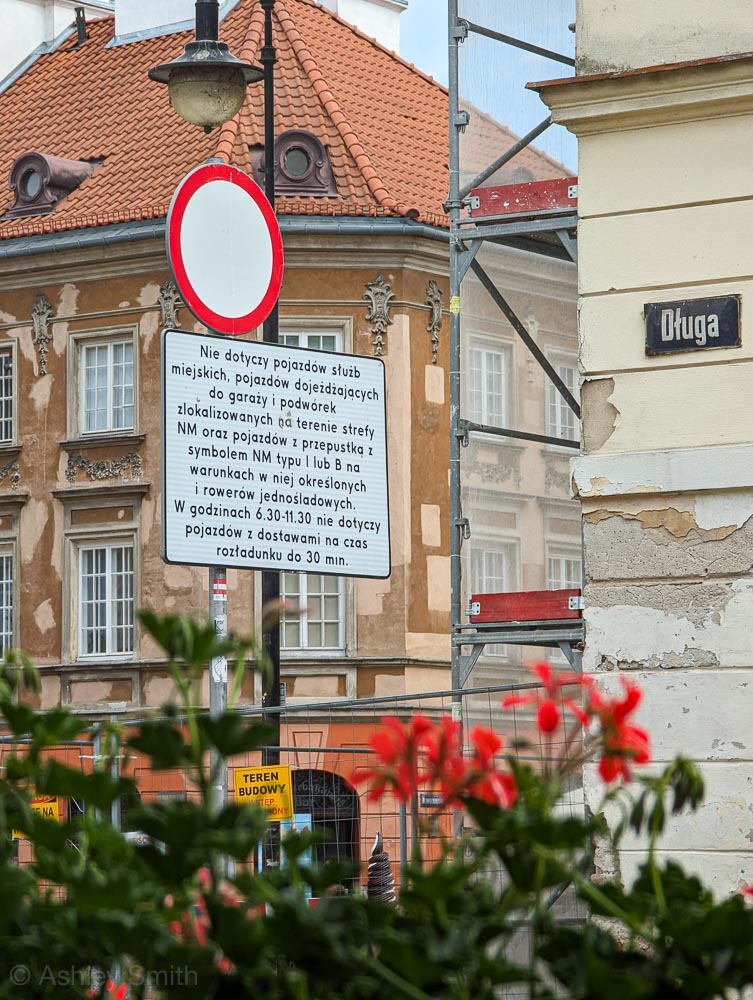
What it’s like driving in Poland
Driving in Poland is a pleasant, beautiful, and entertaining experience (with only a couple of exceptions). The main things to keep in mind are:
Poland is big
I got so spoiled on my road trip around Slovenia because you can drive all the way across the country in less than 3 hours. Most of my daily drives between destinations were less than an hour.
On the first day of my Poland road trip, I left Warsaw, visited the Treblinka death camp, then Hitler’s Wolf’s Lair, and then ended in Gdańsk. That was an 8-hour driving day. Without the extra stops, Warsaw to Gdańsk is still about 4 hours.
While road tripping around Poland, know that it’s around 3 hours (and up) between the major cities, and only if you stick to the highways.
- Warsaw to Gdańsk: 3.75 hours
- Gdańsk to Poznań: 3.25 hours
- Poznań to Wrocław: 2 hours
- Gdańsk to Wrocław: 5 hours
- Wrocław to Kraków: 2.75 hours
- Kraków to Warsaw: 3+ hours
See my whole 2-week Poland WWII itinerary here.

These times are all based on the major highways though. Many of Poland’s WWII sites are quite remote which means you may only actually see a highway for a very short time. The vast majority of my driving in Poland was on rural country roads, which greatly increases the drive time.
Another thing to mention here is that you’ll find yourself for a long time driving on perfectly straight roads with no turns. This can make for a mind-numbing drive on some of the longer trips.
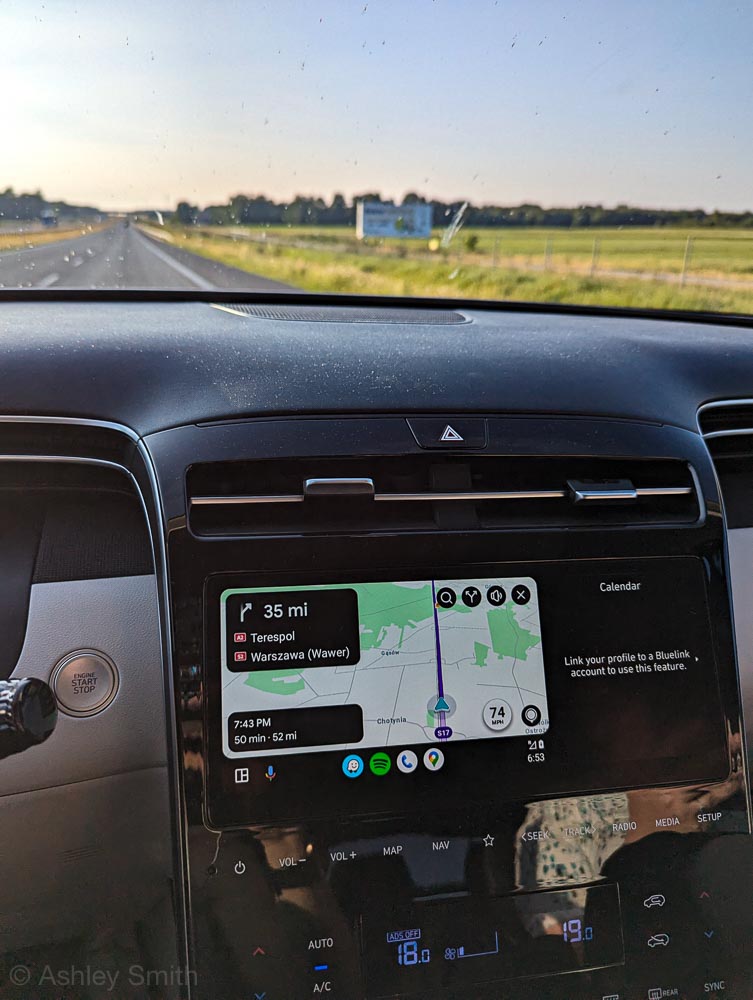
Polish drivers are insane
Look, I don’t care where you’re from, you need to be prepared for sharing the road with Polish drivers. I live (and drive) in Boston for crying out loud, so I’m pretty used to mayhem, but Poland is next level crazy.
The main thing you need to know is that Polish drivers will tailgate you like there’s no tomorrow. It doesn’t matter how fast you’re already going; it’ll never be fast enough for the locals. They will ride your tail and probably also lay on the horn until they can get around you. This will happen on highways, country roads, city streets–it doesn’t matter.
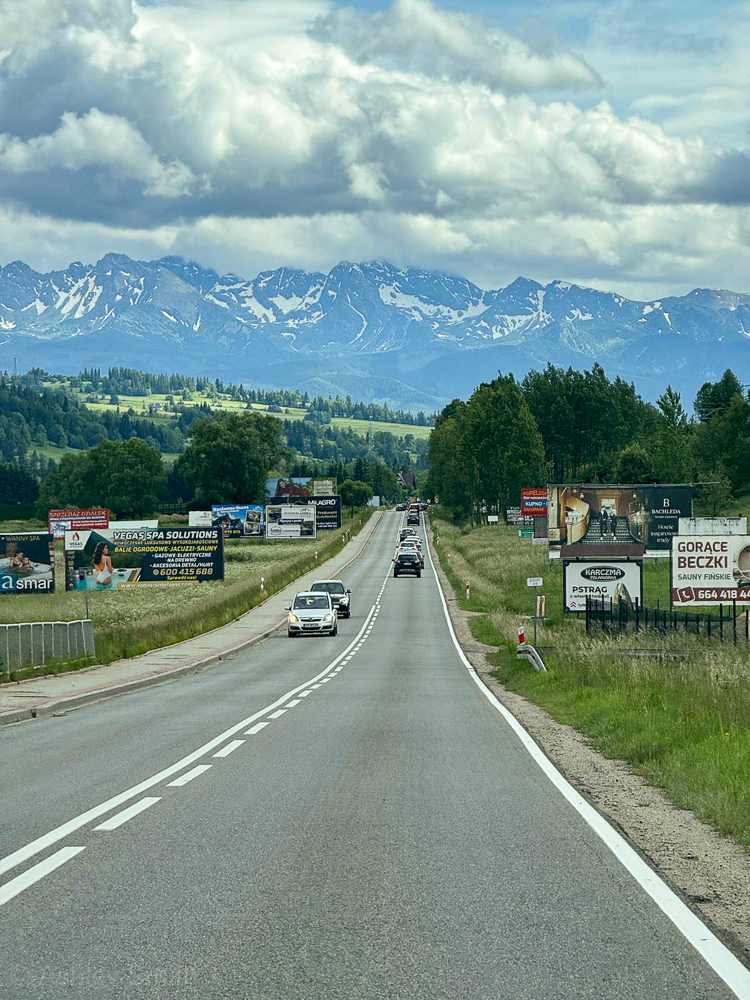
No really, they are
Didn’t take off like a fighter jet as soon as the light turned green? They will lay on the horn as if it’s been 20 whole minutes. One guy even started yelling at my friend in the passenger seat when I went inside the shop to pay for my gas because I wasn’t paying fast enough! Nevermind that there was a line and that my passenger had no control over it.
Another day in Zakopane, I was stuck behind a car trying to get into a parking area for which the driver clearly didn’t have the necessary card to get in (but I did). I generously waited a full five minutes before I gave him a friendly little toot with my horn to scoot over so I could park. Wouldn’t you know, that man threw his car into park, GOT OUT, stomped over to my driver’s side window, and tried to get me to roll my window down, I assume to fight me. (Which I obviously did not do.)
I should’ve known what I was in for when, while in a taxi in Warsaw, my driver encountered some traffic and angrily called it a “catastrophe.” (And in a town where actual literal catastrophes have occurred…) Calm down, sir.
The key is to not let them get to you. Keep on with your safe driving and your speed limits and your paying for gas. Let them freak out; that’s their own issue. Maintain your cool and you’ll be fine.
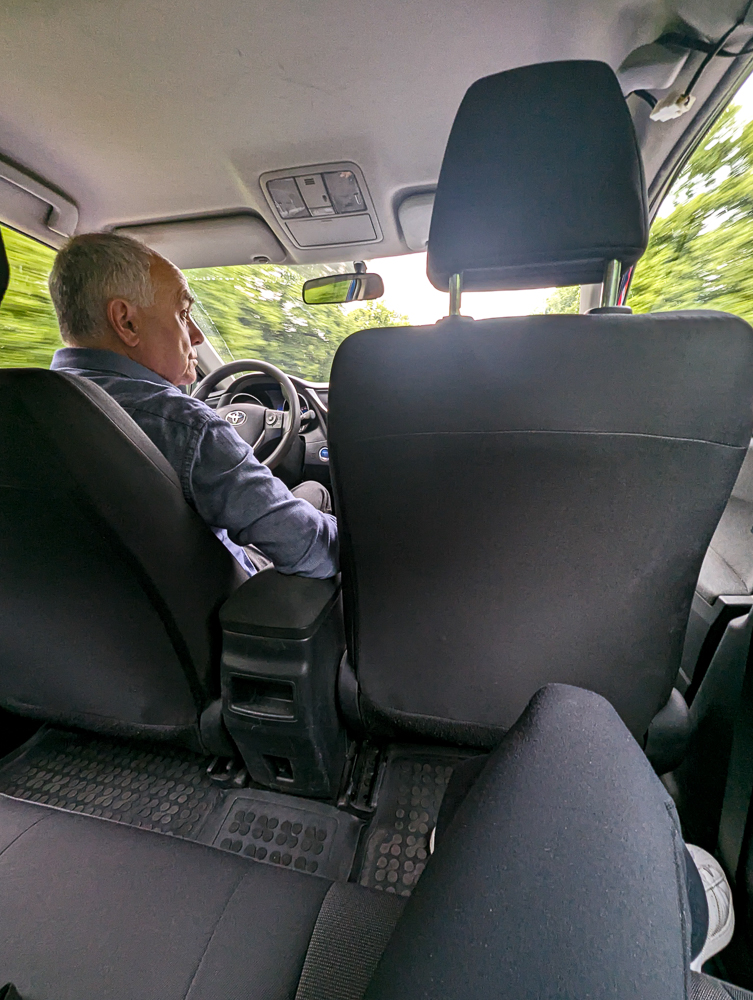
So much negligence
One more story, just to drive my point home. In Wrocław, while walking through the mostly pedestrian part of the city center, my friend and I heard a loud crash/bang directly behind us. Turns out, a man pulled up to this restaurant and got out of his car to yell at someone but left the car in drive.
The car kept going and went up and over the curb, onto the sidewalk, and crashed into this metal barricade, ripping it out of the concrete. (I’m really so proud of the barricade; you served your purpose well little buddy.) The man, after realizing what was happening, still took his time returning to his car. He put it in park and then just left it where it was.
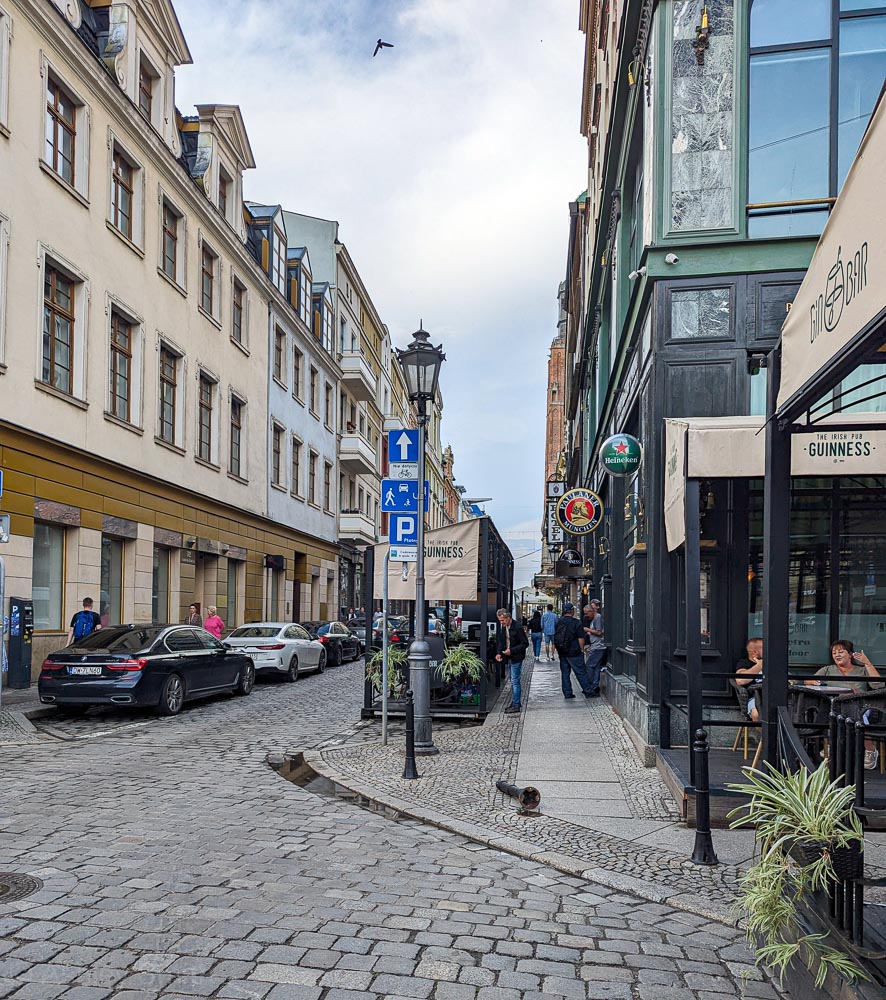
Also read: WWII Sites in Warsaw: 16+ Incredible Museums & More
Polish roads
Before my trip, I’d read in several places to prepare for how bad the roads in Poland are, mainly in terms of potholes and overall neglect. (Again, I live in New England; don’t even try to talk to me about potholes.) However, what I experienced was quite different. In fact, my friend and I kept waiting for the roads to be horrible, but they just never were!
Instead, the roads in Poland were not only perfectly fine, they were actually quite good. And this isn’t just related to the highways. All the back roads, the forest paths, the rural streets, everything was paved, free of potholes, lined, and wide enough for two cars to pass each other. Honestly, we couldn’t figure out where all those warnings had come from.
So, do with that information what you will. I guess, just prepare for the worst but know that it probably won’t be as bad as you’d expect.
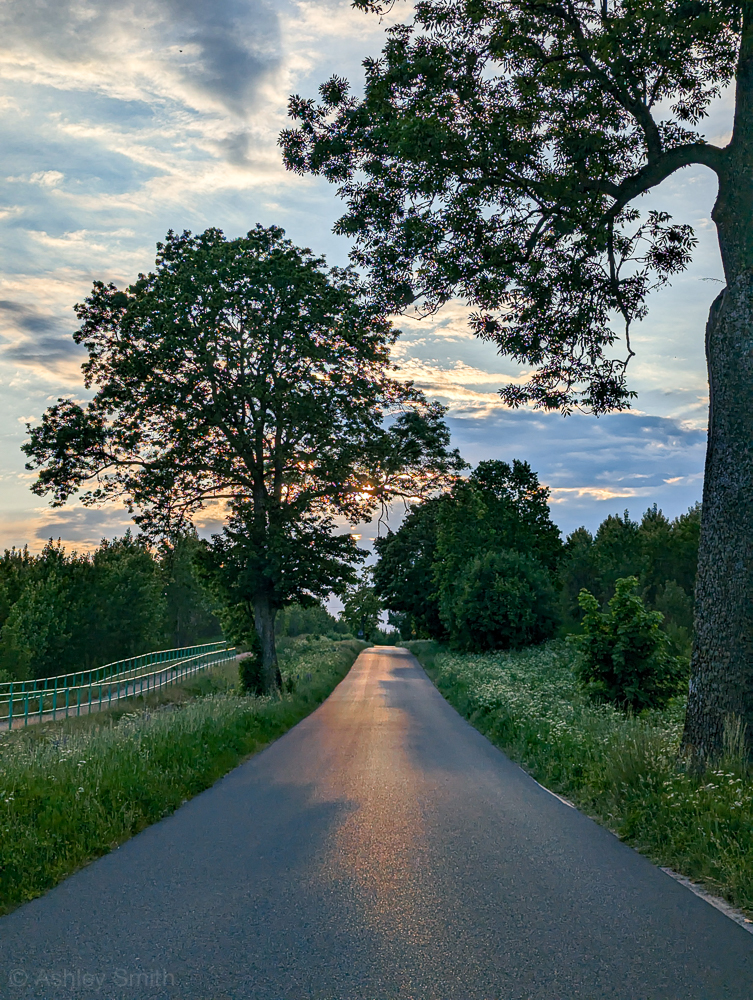
Also read: The Best WWII Books, Movies, & Shows for Your Trip to Poland
Road signs in Poland
One big thing to learn before driving in Poland if this will be your first time driving in Europe are the road signs. For the most part, they’re pretty straightforward and easy to figure out. Some of them may be new to you or just drawn a little differently.
There aren’t many specific examples of Poland road signs I feel the need to point out, so just take a look at this page to get an overview of what they look like and mean. There is one sign, however, you might be interested in (as a WWII buff). And that is what I call the “tank crossing” signs. (See image below)
I saw these signs several times in a few different parts of the country. And at one point I did literally see some tank convoys on the highways! These signs simply refer to the weight limits of military vehicles on certain roads. Though in certain instances they can mean to look out for military vehicles crossing.
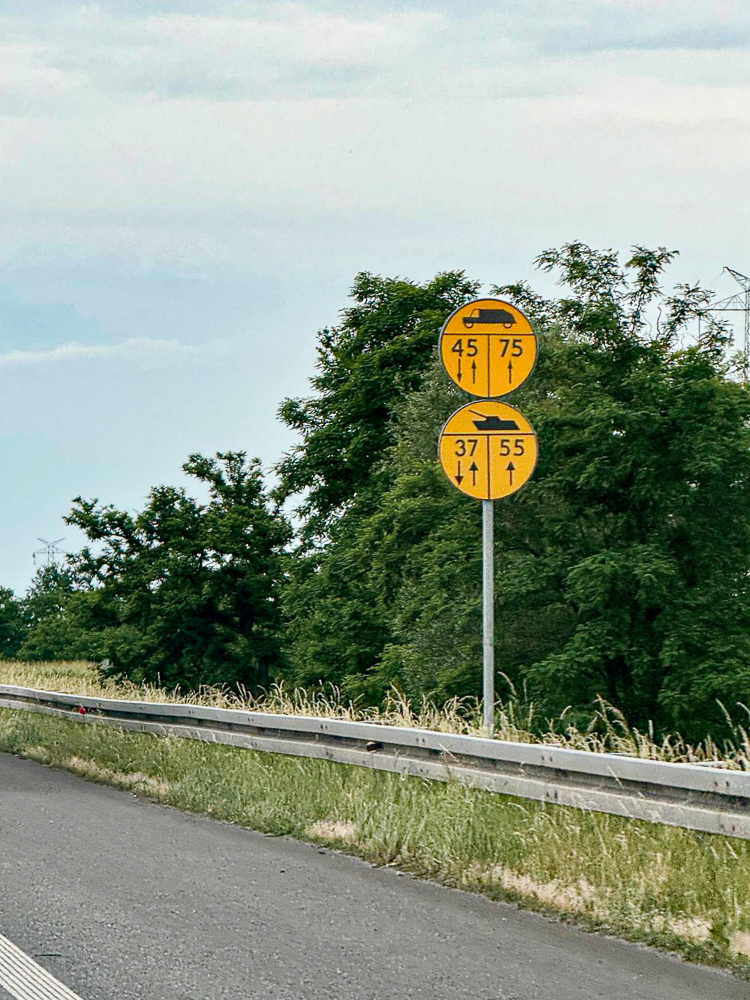
Speed limits in Poland
Here in the US, all roads have their own designated speed limit (which can really be anything). Such is not the case is most Europeans countries, Poland included. Instead, they have standard speed limits that apply to more general (read: vague) situations. In other words, Poland has a whole five standard speed limits:
- 50 km/h for driving in urban areas
- 90 km/h for driving on open roads outside the cities
- 100 km/h for single carriageways with at least two lanes in each direction
- 120 km/h for two-way divided highways with a median (“dual carriageways”)
- 140 km/h for interstate freeways/motorways
Sometimes there’s a sign letting you know which situation you’re entering; most of the time there’s not. The speed limits when approaching a town will drop quickly so always pay attention. It may even be just slowing down from 90 to 50 for half a mile and then back up. The more time you spend driving in Poland, the more you’ll just sort of “learn” which speeds apply when.

Keep in mind that speed limits in Poland are in kilometers-per-hour (not miles-per-hour). Your rental car should already be set for kms, but definitely confirm this just in case.
Speeding violations in Poland
One thing I’ve read is that the reason so many Polish drivers don’t seem to give a crap about speed limits is because speeding tickets are so cheap that getting pulled over is negligible. As someone who did, in fact, get pulled over for speeding in Poland, I can vouch for this.
I can also vouch for the fact that the speed limit can, in fact, drop from 90 to about 20 km/h in a construction zone. And that they’re not afraid to bust you if you don’t literally slam on your brakes when this happens.
My story of getting pulled over for speeding in Poland is a long and hilarious one that I’ll tell at parties for the rest of my life. But since we don’t have that kind of time here, I’ll leave you with another fun fact about speeding violations in Poland: If you’re not a Poland resident, they’ll demand cash on the spot.
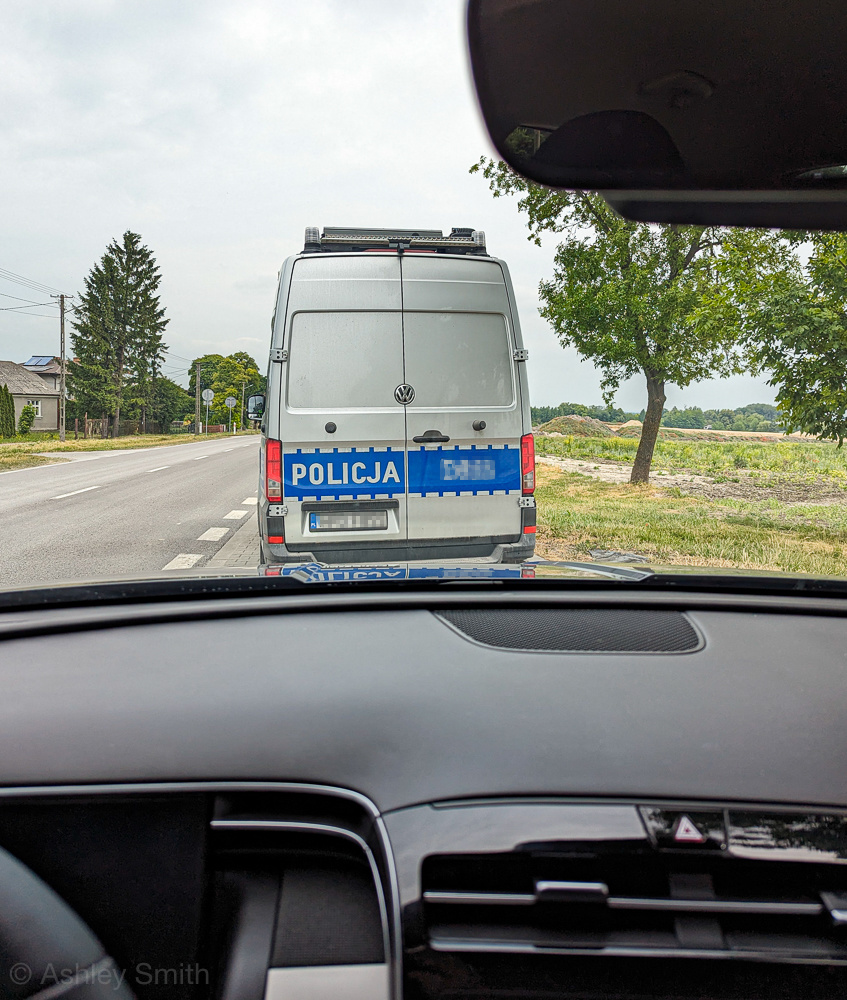
Paying for speeding violations
What will feel both illegal and like a scam is apparently the norm here. It took two (non-English-speaking) Polish cops to explain that I was speeding and thus owed them 100zł (about $20US). “You can pay cash or credit card.”
In the US, handing cash to a cop after I broke a law would constitute bribery and I’d be arrested. Not wanting to get thrown in a Polish jail, I laughed and asked, “Is this how it works in Poland???”
Long story short, because they didn’t speak English and I don’t speak Polish, I never got my answer. When they found out I was on my way to the Sobibor extermination camp, they dropped all “charges” at once and let me go.

However, now that I’m doing some real research on this, I’m finding that this is normal. If you don’t live in Poland, rather than issuing you a ticket, you’ll simply have to pay an on-the-spot fine. Everyone else says they always demand cash, and if you don’t have any they’ll “escort” you to the nearest ATM. My officers gave me the option of paying with a credit card though. I like to imagine their van has one of those old-timey credit card swiping machines.
(Something else worth mentioning is that, while I was stopped during this whole ordeal, cars were flying by me so fast that my car would violently sway back and forth every time.)
Ironically, I got a speeding ticket in France in the same month, oops. If you’d like to read about that, check out my post on driving in Normandy. (For the record, my last speeding ticket in the US was in 2003.)

Getting gas in Poland
Getting gas in Poland is also pretty straightforward, if you’ve ever put gas in a car before. Still, here are few things to be aware of:
The green pump is regular gas
The main thing to keep in mind while driving around Poland is that the pump with the green handle is for regular gas and the one with the black handle is diesel. In the US, diesel is green and regular is black, so don’t mix these up!
Chances are, your rental car will take ‘regular’ gas (not diesel) and probably the 95/E10 type. Your rental car company will (should) tell you when you pick it up. The cars I get in Europe also have a little sticker inside the gas cap as a reminder.
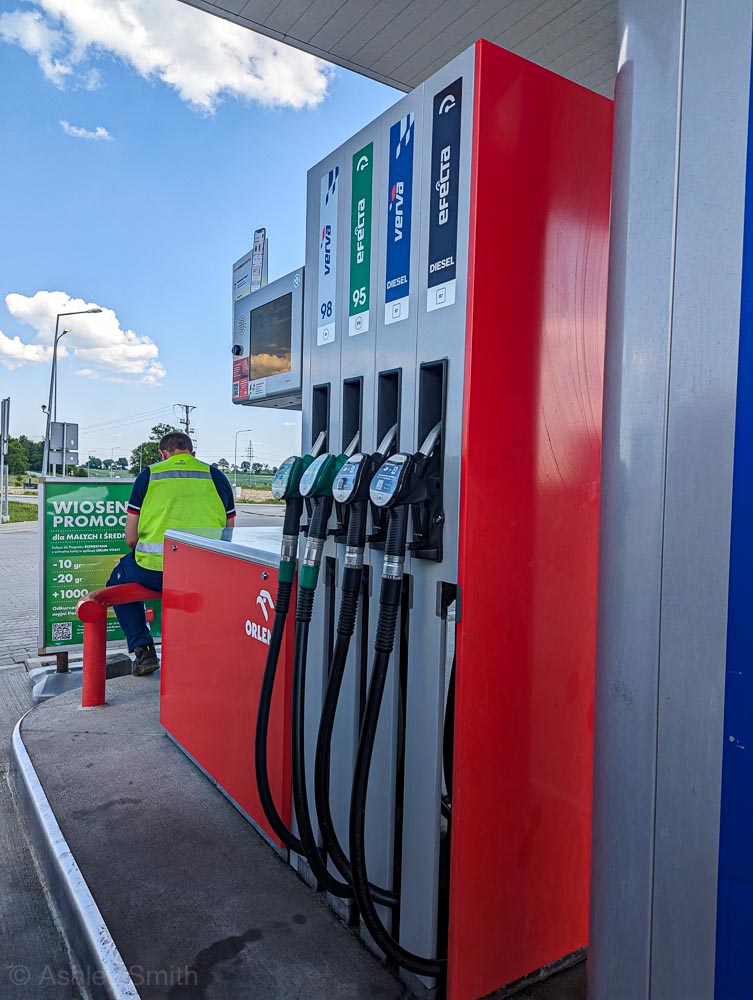
Pump first, then pay
Unlike what you’re probably used to here in the US and most other European countries, in Poland you’re actually going to pump your gas first, then go inside the shop to pay. And every gas station I used in Poland did have a shop with a human attendant.
This is why the man at the gas station was so mad at me. I had pumped my gas and then left my car at the pump while I ran inside to pay. But what was I supposed to do? Pump my gas and then drive off to park somewhere else before I went in? I’d already gotten in trouble with the Policja once; I didn’t want to make a habit of it, sir.
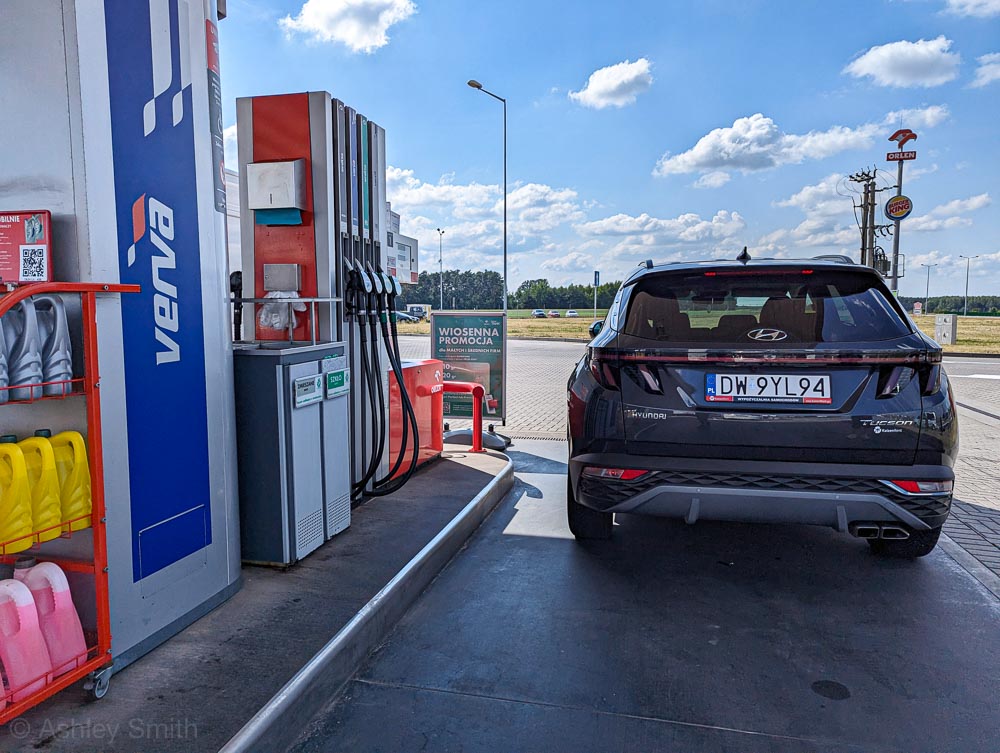
Gas costs more than you’re used to
Gas in Poland (and Europe in general) is much more expensive than you’re used to. I’m talking double what you pay here in the US. You definitely won’t be complaining about gas prices anymore when you get back home.
The two main things to keep in mind when preparing to get gas are:
- The price is in Polish złotys (not dollars).
- The price shown is per liter, not per gallon.
While driving around Poland in June 2024, gas cost around 6.65zł/liter. When you change złotys to dollars and liters to gallons, that comes out to around $6.36 per gallon. (Which is actually much lower than other European countries.) I have no idea what the price of gas will be during your visit; this is just a warning to expect much higher prices.
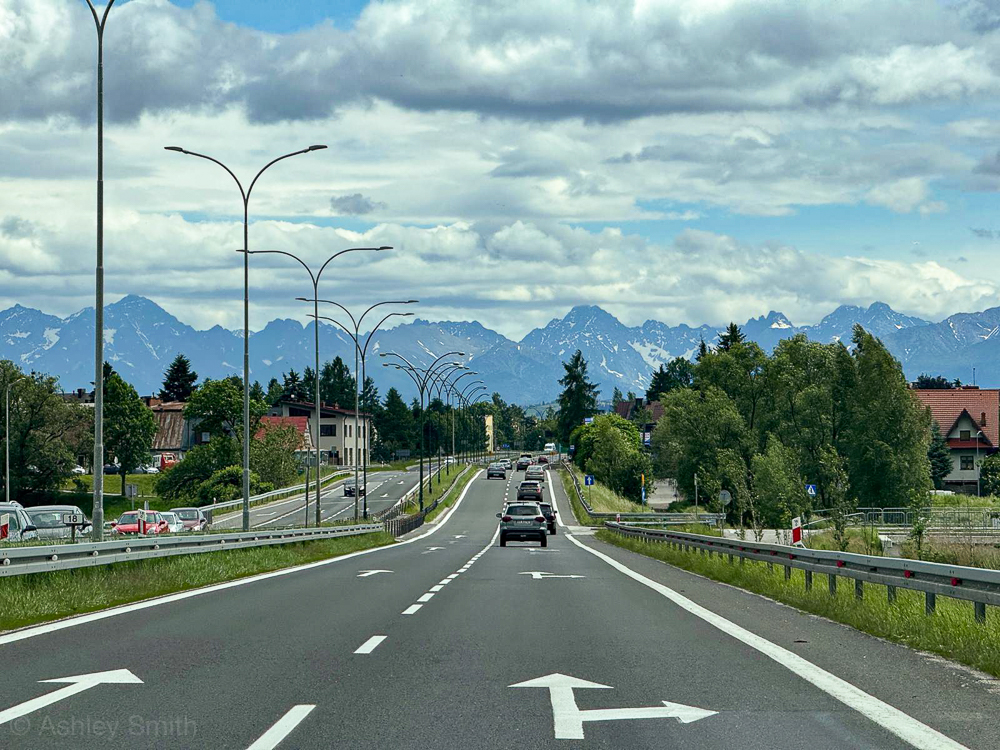
Parking in Poland
Outside of the major cities, parking in Poland is typically free and super easy. Within the major cities, it’s still fairly easy, but there are still a few things to be aware of.
You might have to park on the sidewalk
This is a common thing all over Europe where available space for parking is limited. It’ll feel weird as hell doing it, but you’ll soon notice it’s quite the norm. Though you’ll sometimes see cars fully parked on the sidewalk, usually it’s a half on/half off situation. (See photo below.) Take a look at what everyone else has done in that area and follow suit.
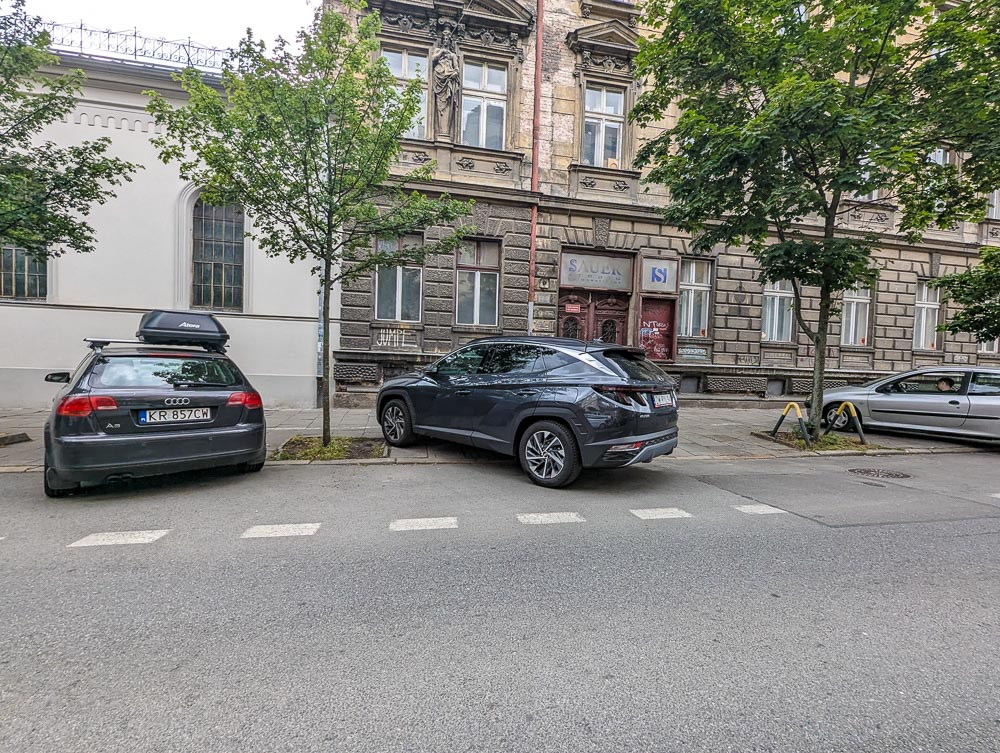
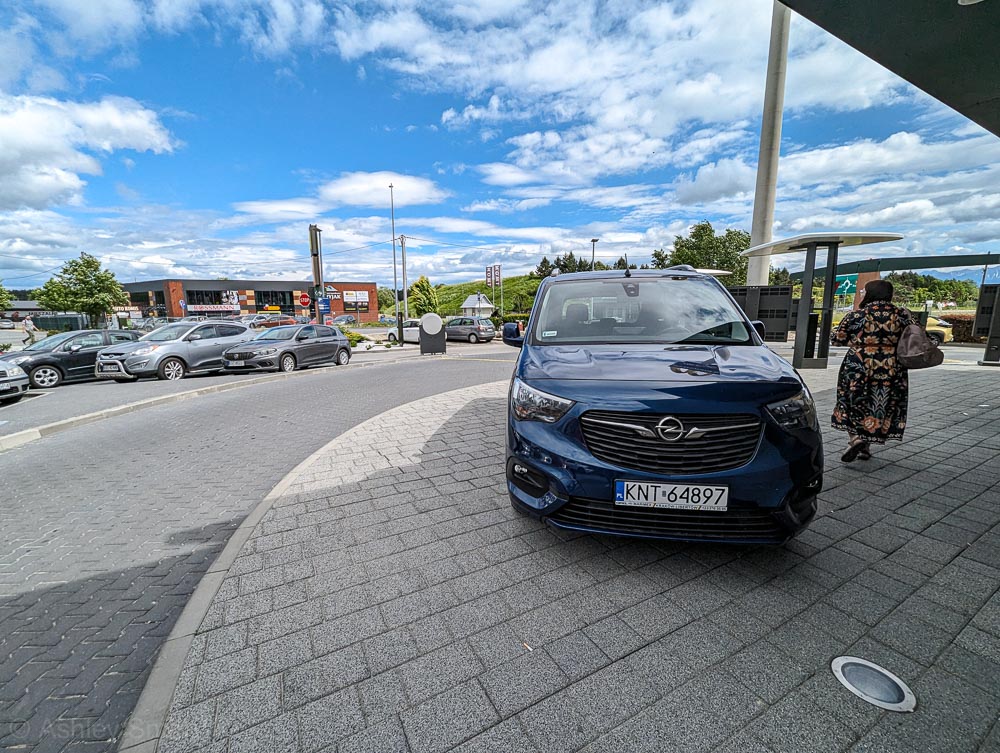
When to pay for parking
Paid parking in the cities generally follows a “workday” schedule, but each city operates under its own paid parking schedule. All cities offer free parking on public holidays. For example, you’ll have to pay for parking in the following cities from…
The above times specifically refer to street parking and parking meters. (And these times may or may not be posted. Sometimes you’re just supposed to know.) If you park in a garage or private lot, they’ll have their own times and rates to follow independent of the city schedules.
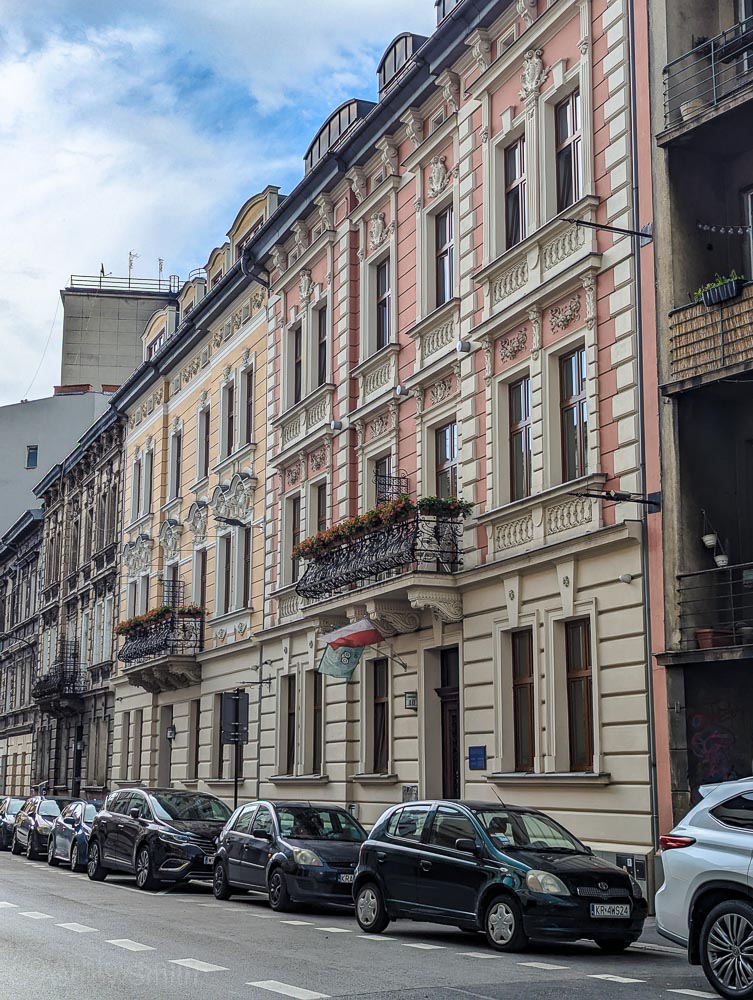
Always check with your hotel first
Before you show up and try to park, always talk to your hotel first. They may have their own parking lot or garage you can park in. If not, they may have deals worked out with nearby lots where you can park at a discounted rate. Otherwise, they can at least recommend somewhere close by or, even more important, tell you where not to park.
My hotels in Wroclaw (Hotel Monopol), in Poznań (City Solei), and in Zakopane (Aries Hotel & Spa) had their own lots to park in. My hotel in Kraków (Amber Boutique Hotel) was surrounded by tons of street parking. The apartment I stayed at in Gdańsk has its own underground parking garage with a reserved parking spot for each apartment.
Regardless, if you’re staying at a hotel within one of the major cities, plan to park your car and leave it there. Pretty much anywhere you want to go within the cities is walkable and trying to use your car is going to be more hassle than it’s worth.
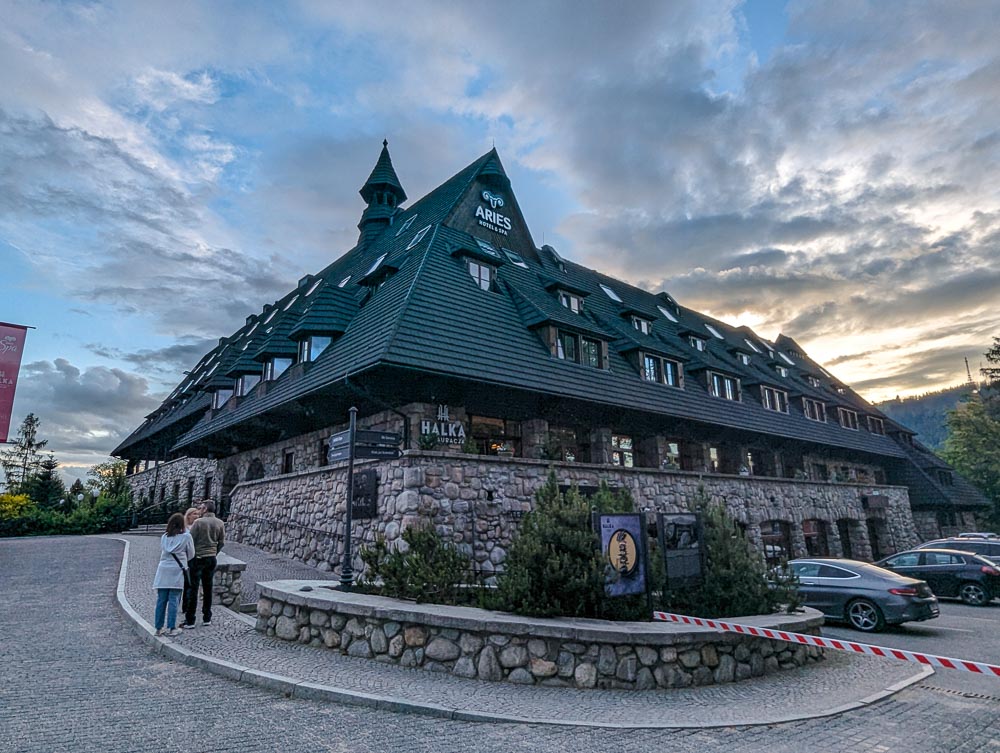
Where to park at the major sites
If you’re anything like me, you like to plan ahead and in as much detail as possible, especially when it comes to parking. (Part of the trauma that comes with living in Boston, I suppose.) So, here’s where you can or should park at Poland’s WWII sites:
Concentration camp museums and memorial sites
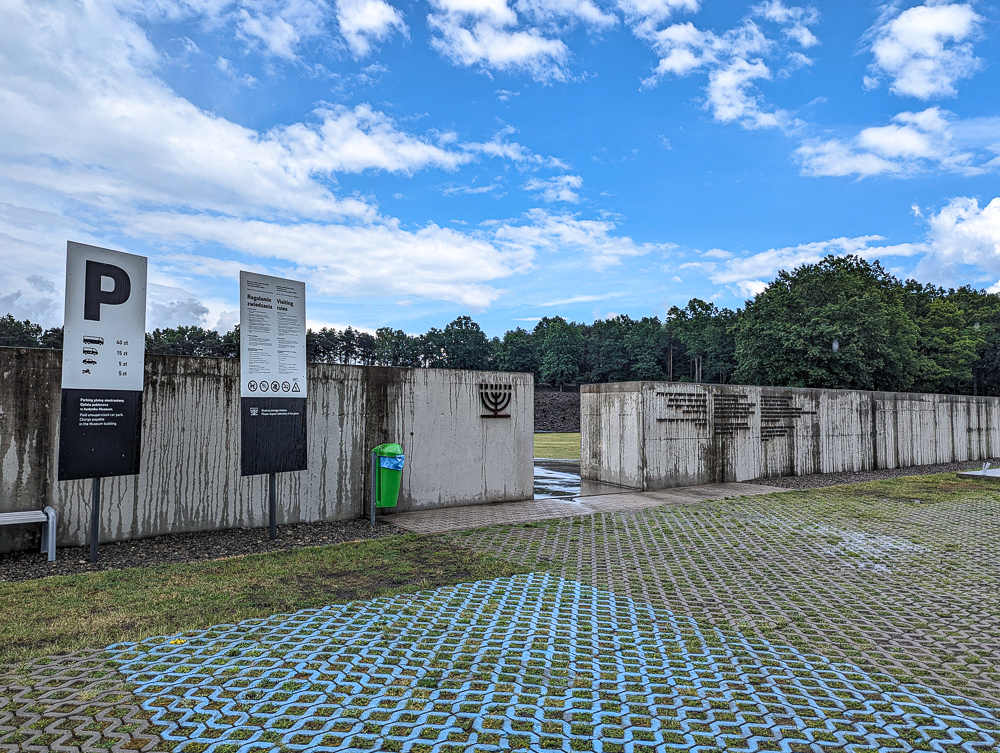
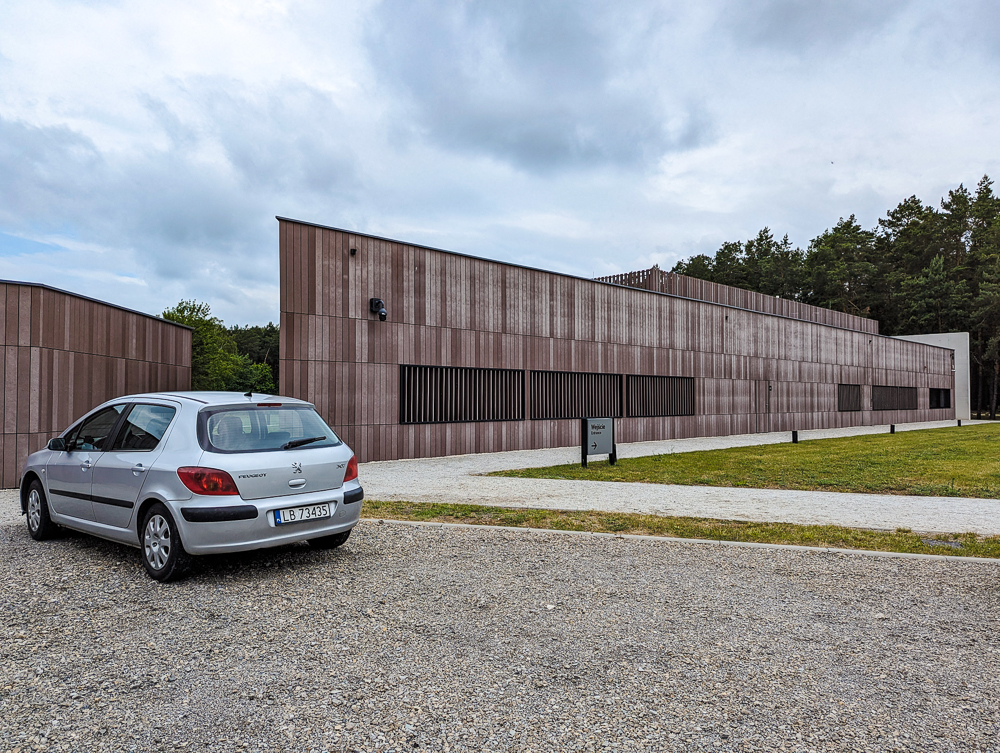
Other Poland WWII sites
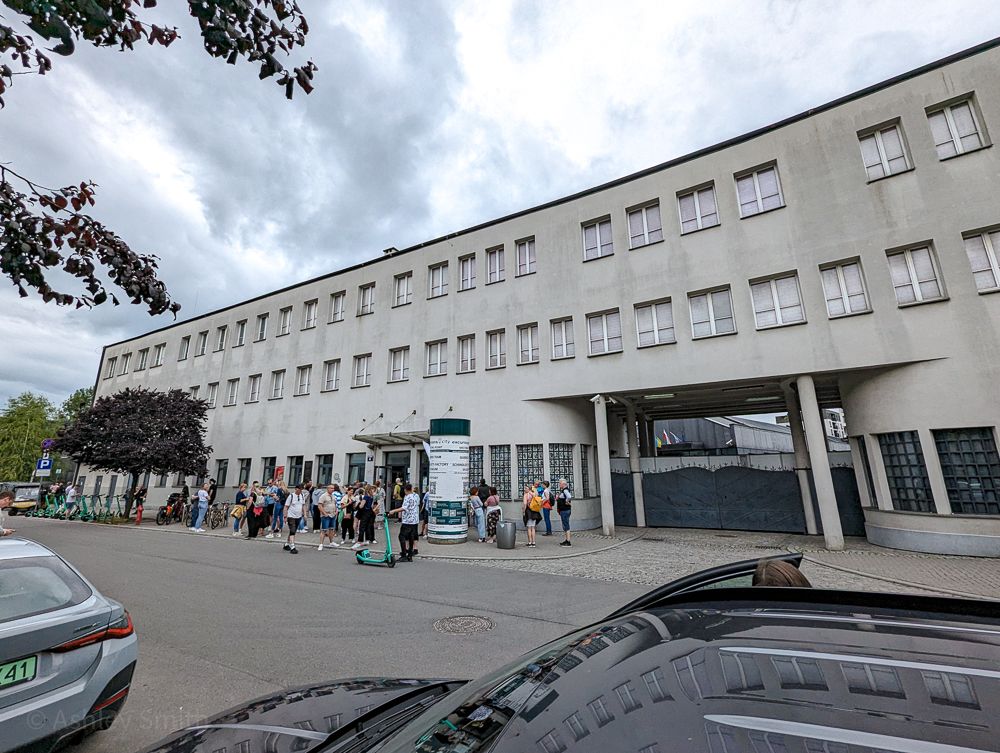
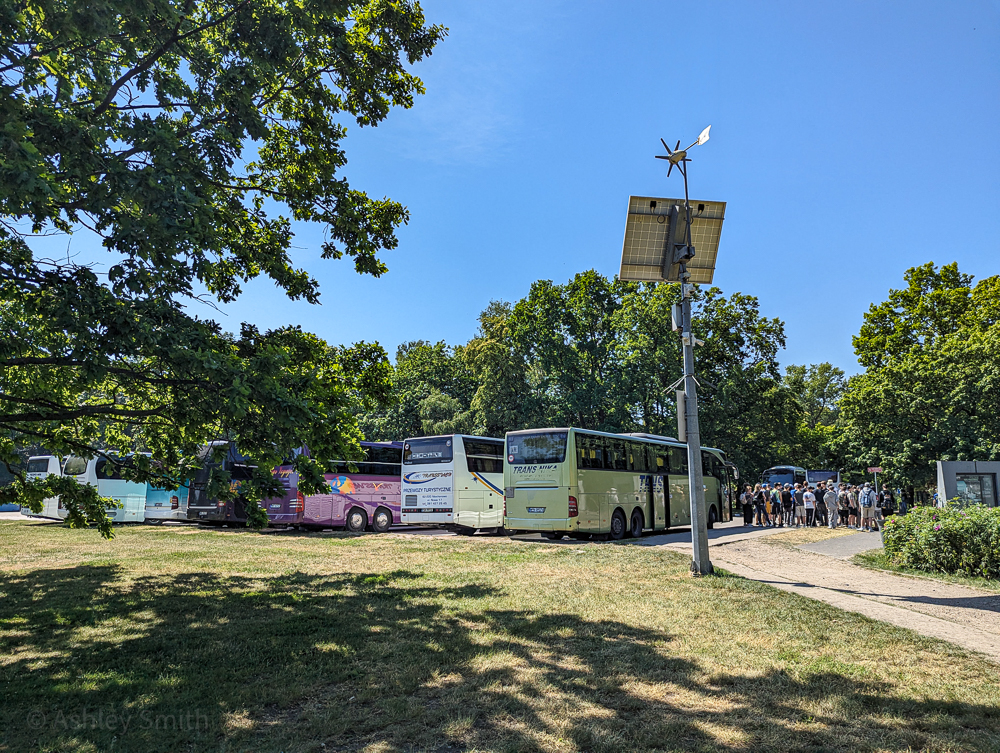
Poland parking map
And here are all of the above parking locations on an interactive map. To save this map: Click on the star ⭑ next to the map’s title to save in your Google Maps. To use this map: When you get here, open Google Maps on your phone, click “Saved” at the bottom, then click “Maps.”
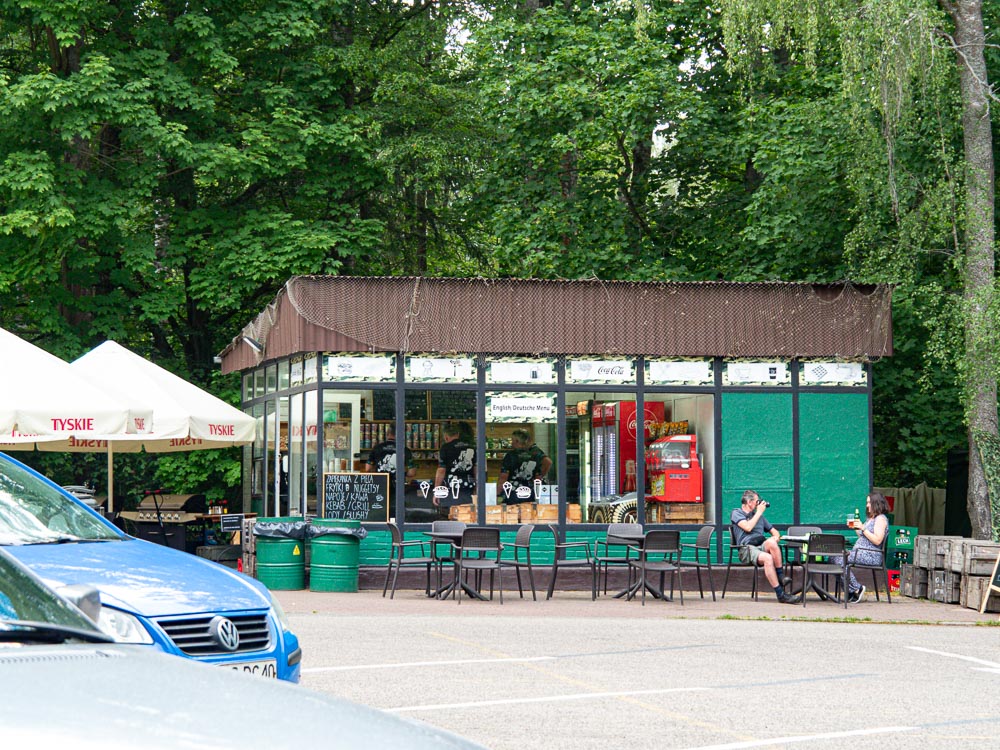
Driving in Poland: More Helpful Things to Know
Lastly, here are a few random things I picked up while driving in Poland that may help you on your Poland road trip.
Driving in Kraków
Kraków has the narrowest and most crowded streets of them all. If you can avoid driving into the thick of this city, I highly recommend it. Many streets are one-way or so crowded that you can’t turn around which will require a lot of reversing. There’s also lots of foot traffic and bicyclists to watch out for.
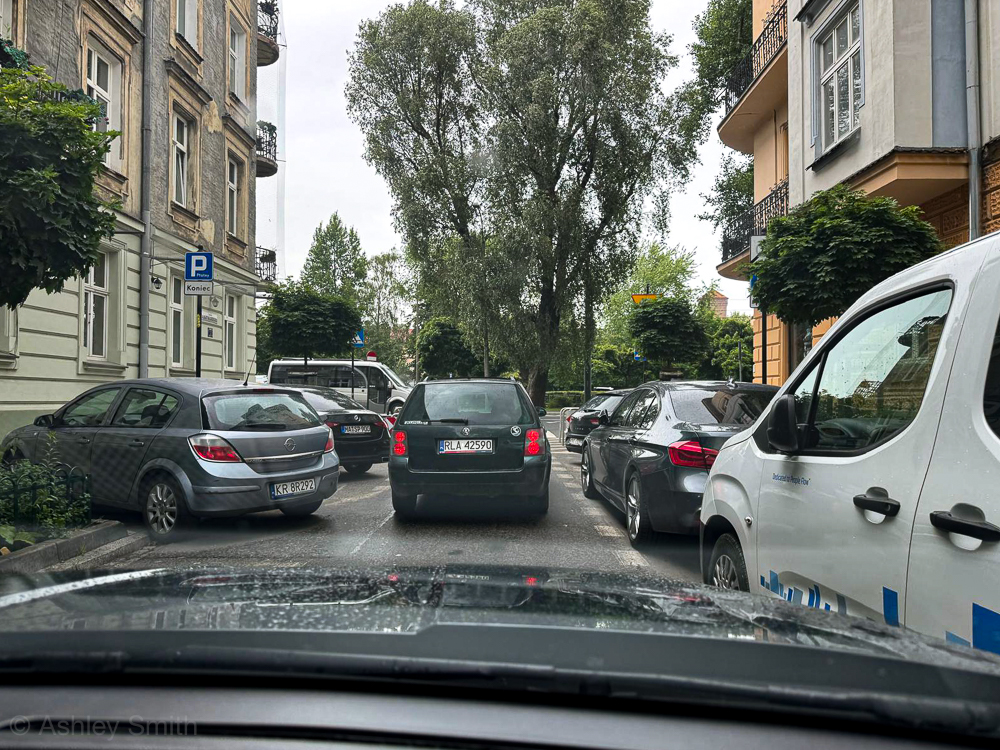
Uwaga!
One unexpected thing to watch out for while driving in Poland is moose! Trust me, no one was more shocked at seeing a moose walking near the highway outside Warsaw than I was!
Moose are native to Poland, and after the country’s moose population suffered a massive decline as a result of World War II, postwar preservation efforts maybe worked a bit too well. You’ll see signs warning you to watch out for moose, mainly in Poland’s northeast quadrant, so definitely stay alert.
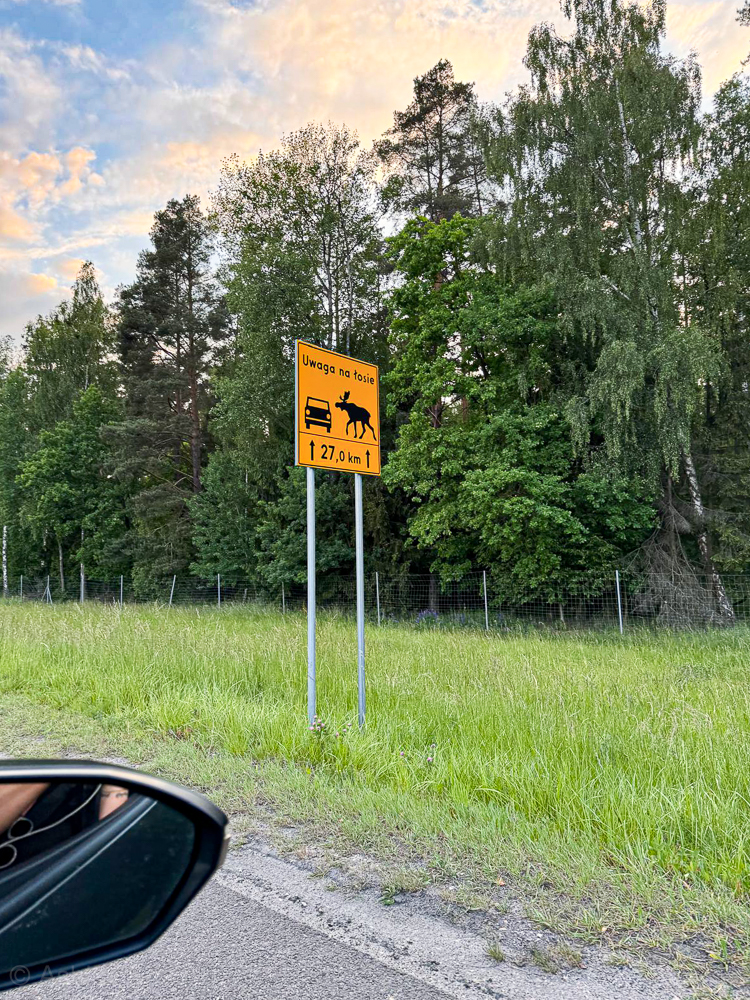
McDonald’s and KFC
I’m from the United States. I grew up in Tennessee. And still, I have never seen more McDonald’s and Kentucky Fried Chickens than I have in Poland, BY FAR. If you plan to take a road trip around Poland, be prepared for McDonald’s and KFC to be your only food options in much of the country.
Between the major cities, there are really only small towns that may or may not have a restaurant (that may or may not be open). But there’s going to be a McDonald’s and/or KFC every few miles. You’ll see.
In Zamość, none of the cafés or even donut shops opened before 10am. (Let’s be real, this is insane.) So, McDonald’s for breakfast it was. Again.
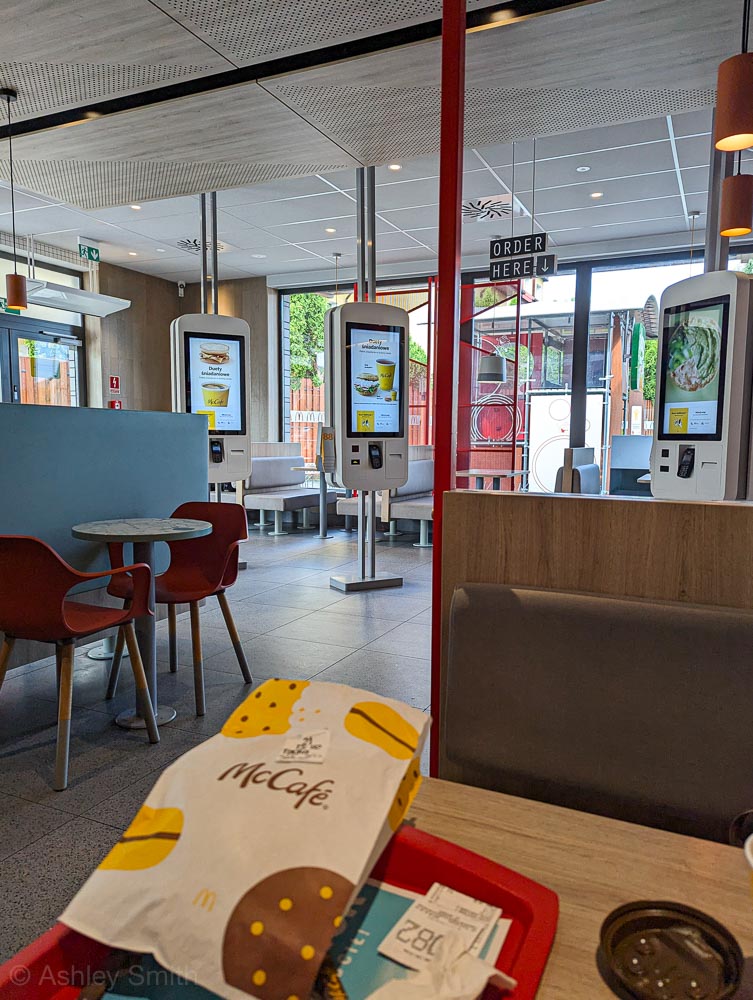
Gas up
If you’ll be taking some trips out to the more remote WWII sites, be sure to gas up beforehand. Sites like the Wolf’s Lair, the Walimskie Tunnels, and Sobibor extermination camp especially are pretty remote and require long stretches of driving through nothing but forests. I don’t even know what to tell you if you run out of gas in these places. So just don’t.
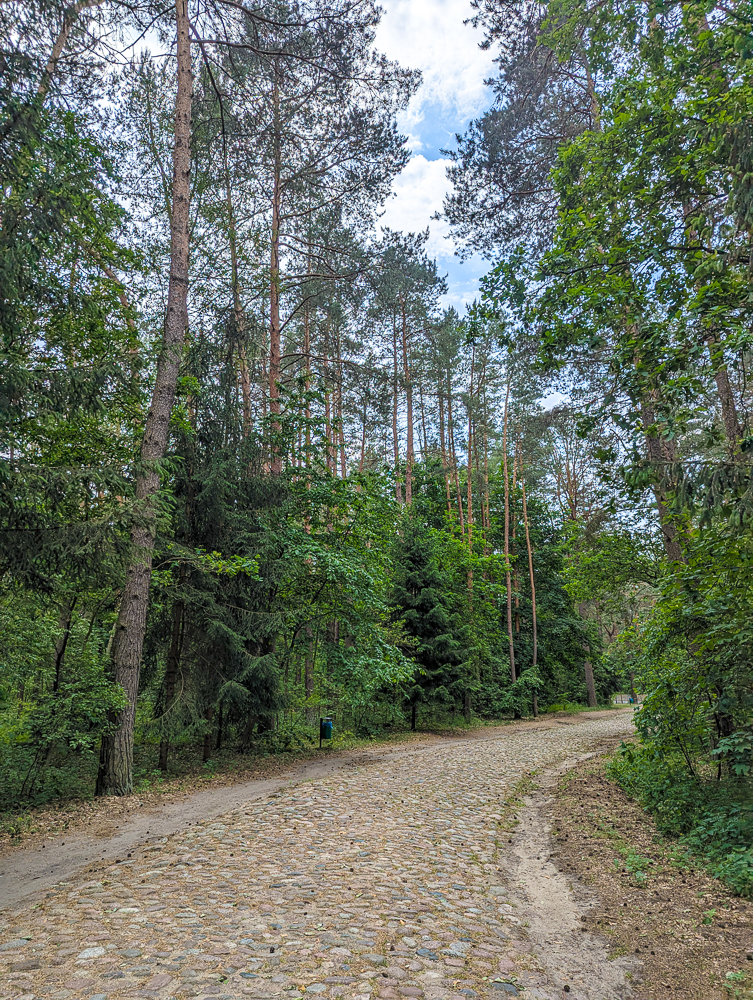
Some intersections are weird
I’m not going to lie to you, I had no idea what I was supposed to do when I came to an intersection that had both a stop light and a stop sign in the same spot. (See photo below.) I’ve since talked to a Polish driver who tells me the stop sign is sort of like an extra layer of caution given how insane Polish drivers can be. (See? I told you!)
Essentially, you would drive through the light when it turns green, and then do a little pause at the stop signs just to make sure everyone is following the rules of the road before you continue through the intersection. But the stop light always has priority.
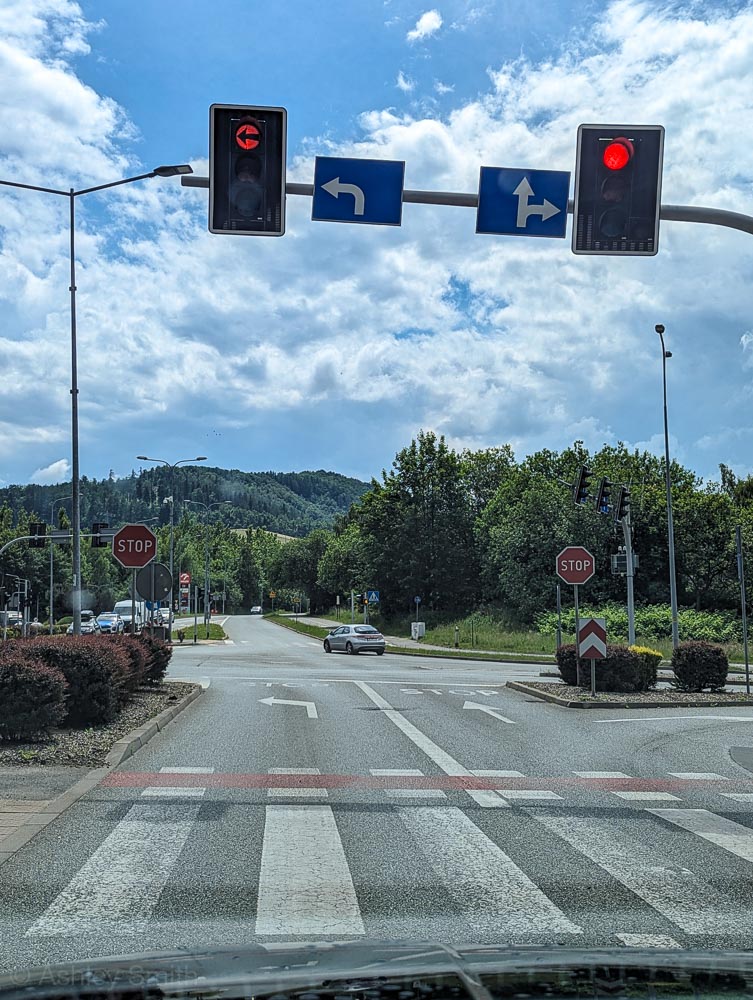
More info for your visit to Poland
- Hotels: Find great places to stay on Booking.com (my go-to). Expedia and Hotels.com are worth checking too. VRBO is best for apartment rentals.
- Rental cars: Check out the best local rental car deals here.
- For great local tours, check out all the options from Viator and Get Your Guide.
- Don’t forget a Poland guidebook and this must-have Poland customs and culture guide!
- Want more? See all my Poland posts here.
Like this post? Have questions about driving in Poland? Let me know in the comments below. Thanks for reading!

Save this info, pin these images:

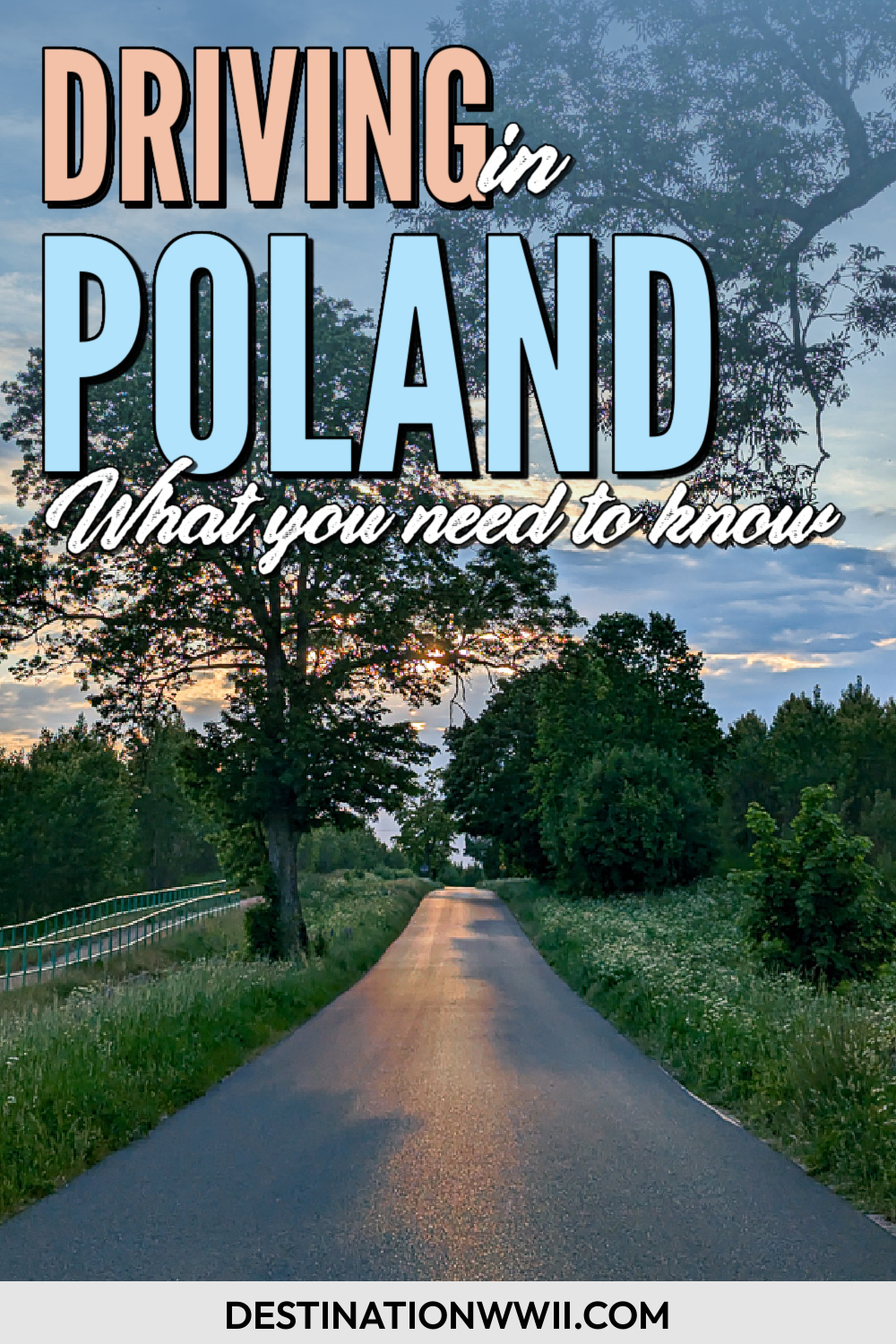
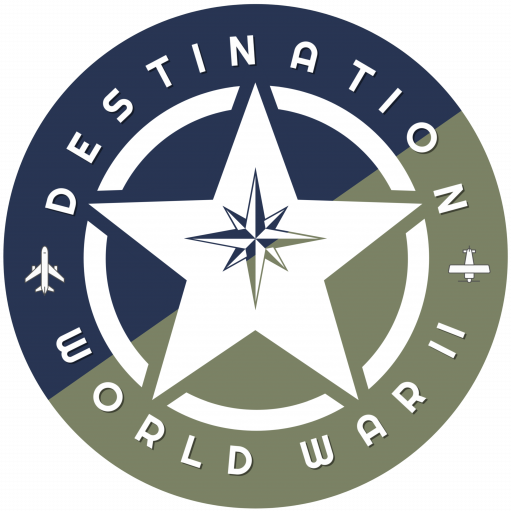
Great read. Thanks
Thanks Sherrie!
Hello! Thank you for information.
I am planning to drive to Poland on friends car from Latvia. Do you know, if I need legally signed power of attorney to drive friend’s car in Poland?
I will have insurance, my ID, international driving license and car registration.
Hi Ainars, Unfortunately I don’t have any idea about that. That’s not something I’ve ever heard of before since I’ve only rented cars there. Here in the US, that would be a question for your friend’s insurance company.
Thank you! Insurance in EU covers for all drivers. Hope that signed authorization letter would be sufficient.
Btw, nice and informative post.
This is so informative. I traveled to Poland last year and am returning this summer. I am now fully prepared for my return. Thank you so very much.
Thank you, Jim! I hope you have another great trip to Poland.
You write so well and the photos are so good you should try selling them. Great info Ashley.
Thank you!